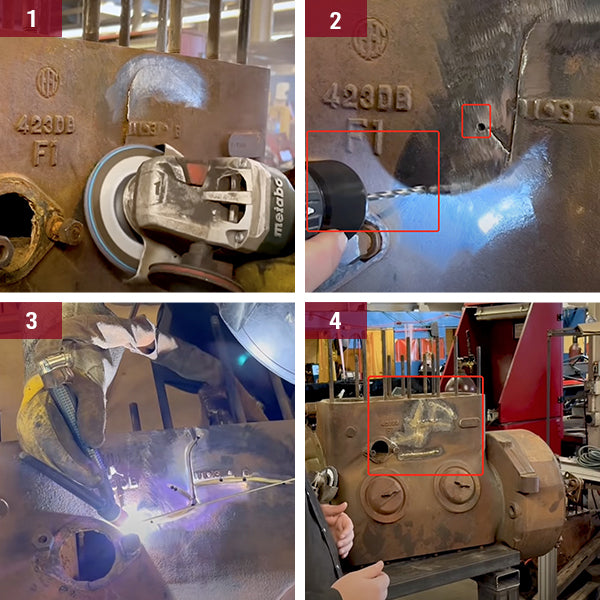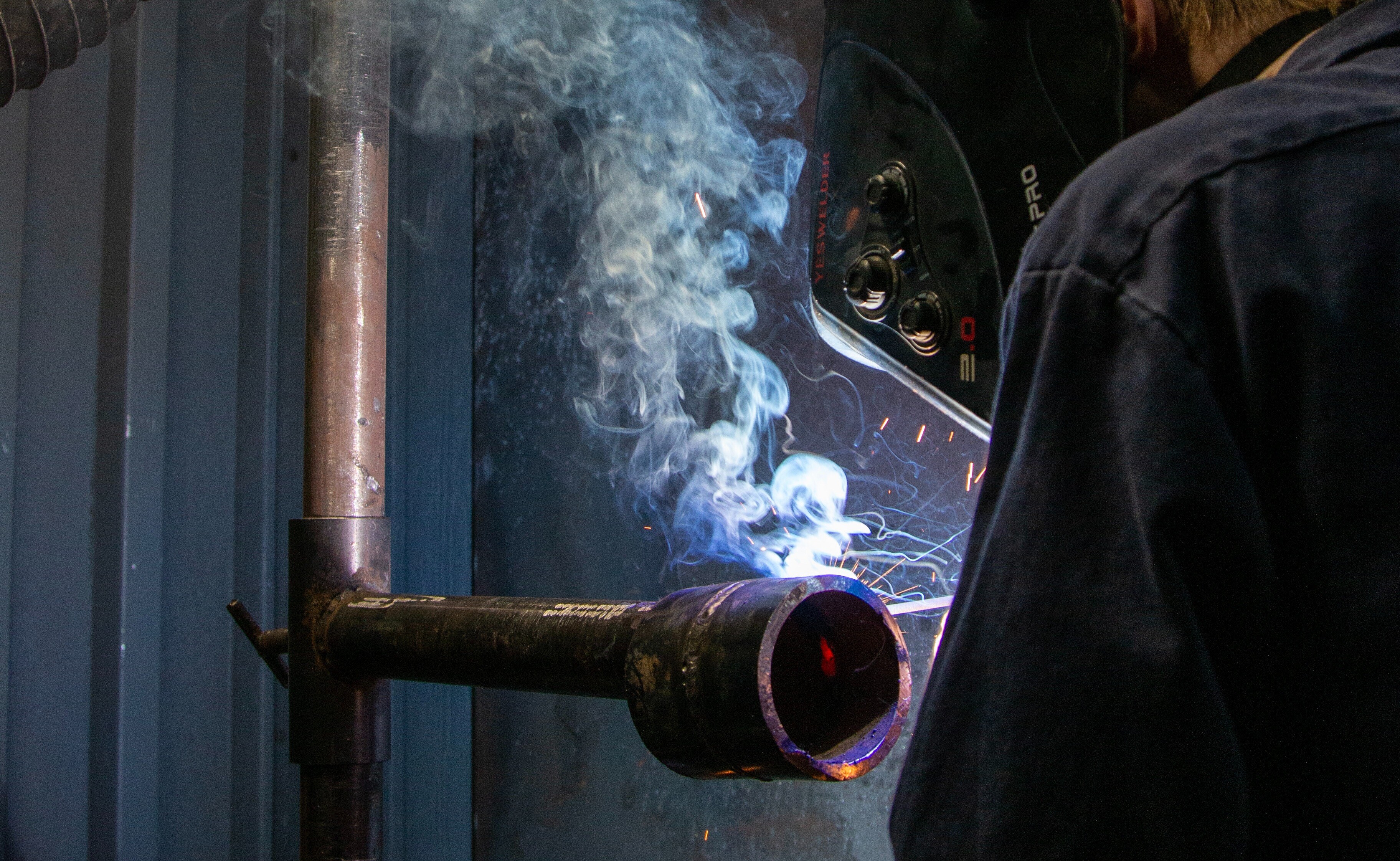A quick guide about overheating prevention from Montana Mobile Welding and Repair
Wiki Article
All Regarding Welding: Secret Insights Into Techniques and Finest Practices for Success
Welding includes a variety of methods, each fit for specific materials and applications. Understanding these techniques, such as GMAW, SMAW, and TIG, is vital for achieving optimal results. Furthermore, the right devices and safety and security practices can not be overlooked. As preparation and fixing play critical functions in the welding process, grasping these elements can significantly boost the high quality of the final item. What are the vital aspects that guarantee an effective weld?Comprehending Various Welding Methods
Welding techniques encompass a variety of approaches, each matched to details applications and products. Amongst one of the most typical strategies are Gas Metal Arc Welding (GMAW), Secured Steel Arc Welding (SMAW), and Tungsten Inert Gas Welding (TIG) GMAW, also called MIG welding, is prominent for its rate and flexibility, making it excellent for slim materials. SMAW, or stick welding, is preferred for its simplicity and effectiveness in exterior settings, especially with thicker metals. TIG welding uses accuracy and control, making it ideal for intricate job and non-ferrous metals (Fabrication). Each method has its unique advantages and considerations, permitting welders to choose the most effective approach based on the project's requirements, material type, and wanted results. Comprehending these strategies is vital for successful weldingVital Welding Tools and Devices
While various welding methods call for certain skills, the ideal devices and devices are equally vital for achieving top quality results. Important welding tools consists of welding devices, which differ relying on the method-- such as MIG, TIG, or stick welding. Protective gear, including handwear covers, aprons, and helmets, guarantees security and convenience throughout the process. In addition, components and clamps help safeguard products in position, guaranteeing precision in welds. Consumables like welding rods, cable, and securing gas are also critical components that affect the top quality of the weld. Moreover, devices such as grinders and cutters facilitate surface preparation and post-weld ending up, adding to a professional outcome. Buying high-quality devices ultimately boosts the efficiency and effectiveness of welding jobs.Safety And Security Practices in Welding
Correct safety and security methods are essential in the welding sector to safeguard employees from possible risks. Welders should put on proper personal protective equipment (PPE), consisting of headgears with appropriate shading, handwear covers, and flame-resistant garments. Appropriate ventilation is important to decrease direct exposure to hazardous fumes and gases generated throughout the welding procedure. Furthermore, employees must be educated in the correct handling of welding tools to protect against mishaps. Fire precaution, such as keeping combustible materials away from the welding location and having fire extinguishers readily available, are needed. Routine inspections of tools and work spaces can help determine potential dangers prior to they lead to mishaps. By adhering to these safety techniques, welders can create a more secure working atmosphere and decrease dangers related to their trade.Readying Products for Welding
Preparing products for welding is an important action that substantially influences the quality and stability of the end product (Montana Mobile Welding and Repair Belgrade). Proper prep work entails cleansing the surfaces to remove impurities such as dirt, rust, and oil, which can jeopardize the weld. Methods such as grinding, sanding, or utilizing solvents are generally used to achieve a clean surface. In addition, making sure that the materials fit together comfortably is necessary; spaces can lead to weak welds. It's also essential to consider the placement and positioning of the parts, as this will affect the convenience of welding and the final outcome. Finally, selecting the ideal filler product and making certain compatibility with the base metals is crucial for attaining solid, resilient weldsTips for Getting High-Quality Welds
Accomplishing high-quality welds calls for attention to information and adherence to best techniques throughout the welding procedure. Proper joint prep work is necessary, making certain surfaces are cost-free and clean from contaminants. Selecting the ideal filler material and welding technique based on the base steels is important for perfect bonding. Preserving consistent traveling speed and angle while welding can stop flaws and advertise harmony. In addition, managing warmth input is essential; extreme warmth can lead to bending and compromised joints. If necessary, on a regular basis checking the welds throughout the procedure permits for prompt modifications. Employing ideal post-weld treatments, such as cleaning and stress relief, can improve the toughness and honesty of the weld, ultimately making sure a successful result.Troubleshooting Common Welding Issues
Welding typically offers obstacles that can impact the top quality and integrity of the end product. Common issues such as porosity, irregular weld beads, and overheating can emerge, each calling for details repairing techniques. Comprehending these problems is vital for welders to improve their abilities and attain suitable results.Porosity Troubles Explained
Although porosity can commonly be forgotten, it continues to be an important concern in welding that can compromise the honesty of a completed product. Porosity refers to the visibility of small gas pockets within the weld bead, which can compromise the joint and lead to early failing. This issue typically emerges from pollutants, wetness, or inappropriate shielding gas insurance coverage throughout the welding process. To reduce porosity, welders should verify that the base materials are tidy and completely dry, utilize ideal protecting gases, and keep regular welding criteria. Frequently evaluating the tools and environment can additionally aid determine prospective problems prior to they manifest in the weld. Attending to porosity effectively is vital for accomplishing strong, durable welds that fulfill quality criteria.
Irregular Weld Beads
Irregular weld beads can greatly impact the top quality and stamina of a finished product. Numerous elements add to this issue, including inappropriate travel speed, wrong amperage settings, and irregular electrode angles. When the welder relocates also promptly, a grain may appear slim and lack penetration, while moving too gradually can trigger extreme build-up. Furthermore, utilizing the incorrect amperage can lead to either undercutting or excessive spatter, both of which compromise weld stability. The welder's method, such as inconsistent lantern motion, can additionally cause unequal grain look. To reduce these troubles, welders need to concentrate on preserving constant, regulated motions and making certain appropriate devices setups to accomplish uniformity in their welds. Uniformity is vital to attaining strong and reliable welds.Getting Too Hot and Warping Issues
Extreme heat during the welding process can cause substantial overheating and deforming concerns, affecting the architectural integrity of the workpiece. These issues commonly show up as distortion, which can endanger positioning and fit-up, making further setting up testing. Factors adding to overheating consist of the choice of welding parameters, such as voltage and travel speed, in addition to the sort of material being welded. To minimize her explanation these concerns, welders should keep consistent traveling rate and proper warm input while keeping an eye on the gasless mig welder workpiece temperature. In addition, pre-heating or post-weld warm therapy can aid alleviate stresses triggered by rapid air conditioning - Fabrication. Routine examination and adherence to ideal techniques are essential in protecting against getting too hot and guaranteeing the longevity and reliability of bonded structuresFrequently Asked Inquiries
What Are the Occupation Opportunities in the Welding Industry?
The welding sector supplies diverse profession possibilities, including settings as welders, examiners, teachers, and designers. Professionals can operate in manufacturing, building and construction, aerospace, and automobile markets, taking advantage of strong demand and competitive wages in different roles.How Can I Boost My Welding Rate Without Sacrificing High Quality?
To enhance welding rate without compromising top quality, one should exercise effective techniques, keep devices, optimize setups, and boost hand-eye coordination. Normal training and seeking responses can also considerably contribute to accomplishing much faster, high-quality welds.What Certifications Are Offered for Welders?
Many certifications exist for welders, including those from the American Welding Society (AWS), the National Center for Building And Construction Education And Learning and Research (NCCER), and numerous industry-specific companies. These qualifications improve employability and show ability proficiency.Exactly How Does Welding Affect the Qualities of Metals?
Welding affects the homes of metals by modifying their microstructure, which can lead to modifications in ductility, solidity, and stamina. Warmth input and air conditioning rates during the process significantly impact these product attributes.Can I Bonded Dissimilar Metals Together?

Report this wiki page